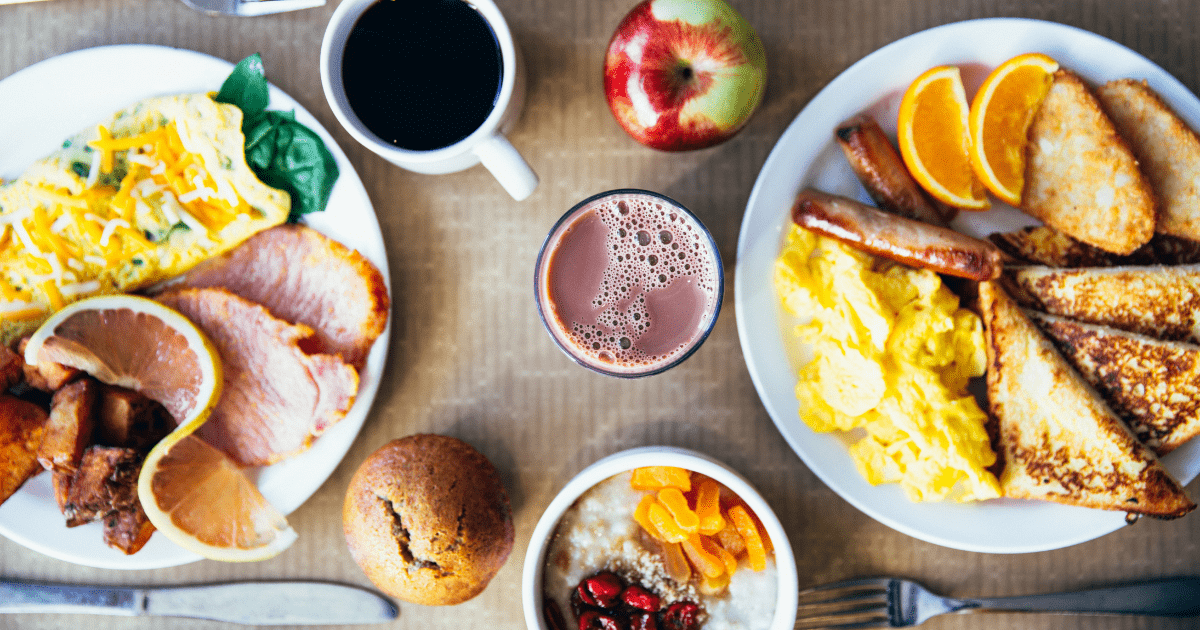The King, the Prince, and the Pauper Diet Plan
Is a calorie a calorie? It depends on the time you eat it. Calories eaten toward the end of the day tend to be converted into fat, while calories consumed in the morning are used throughout the day or lost in diet-induced thermogenesis. Eating within our Circadian Rhythm – our body attunes to the rising and setting of the sun – can have a powerful impact on weight management. This style of eating is called the “King, Prince, and Pauper” diet plan.
A recent study examined this diet with 96 overweight or obese female participants who were randomly organized into two groups — breakfast and dinner. Each group was given a diet to follow of 1,400 kcal with the goal of losing weight. The breakfast group had a 700 kcal breakfast, 500 kcal lunch, and 200 kcal dinner, while the dinner group had a 200 kcal breakfast, 500 kcal lunch, and 700 kcal dinner. Because both groups were placed on a lower caloric intake, both lost weight, but one group outperformed the other.

The breakfast group lost 2.5 times the weight of the dinner group at the end of the 12-week study. The breakfast group had a 10% reduction in BMI compared to the 5% reduction in the dinner group. The breakfast group also had a significantly greater reduction in waist circumference (-8.5 ± 1.9 vs. -3.9 ± 1.4cm). The study also looked at health markers, such as blood pressure, total cholesterol, LDL, HDL, blood glucose, insulin, and ghrelin, and found the breakfast group outperformed the dinner group in all markers. The dinner group had a reduction in all of the health markers except triglycerides, which increased by 14.6%.
The authors explained the benefits of a large breakfast by way of ghrelin suppression and diet-induced thermogenesis. A large breakfast suppressed the hunger hormone ghrelin, which supported objective and subjective measures (lab values and questionnaires). The large breakfast made the participants less hungry throughout the day. Also, a large early meal was subject to loss of energy through heat thermogenesis. It could also be theorized that calories consumed early in the day are more likely to be used for physical activity as opposed to calories late in the day that may be turned into fat.
Practical applications include working with clients and educating them on meal plans that focus on 50% of calories in the morning, 30% at lunch, and 20% at dinner. This works well in conjunction with mindful eating practices and caloric density education, a moderate physical activity program, and education on sleeping, which focuses on blue light disruption. This study’s work has helped quantify the effect of the King, Prince, and Pauper diet plan.
This diet plan may not be suitable for everyone’s lifestyle, but if possible, can help achieve weight loss goals by changing the ways calories are consumed throughout the day. Be sure to talk to your healthcare provider or Registered Dietitian Nutritionist before making any drastic changes in your diet.

Kevin A. Richie, MS, RDN, LD | kevin.richie@hcsgcorp.com
“I enjoy working in long-term care and rehabilitation because I witness residents improve with the nutritional therapy.”
Starting with HCSG in 2021, Kevin Richie earned a B.A. in Sociology from Indiana University, B.S. in Dietetics, and an M.S. in Human Nutrition & Food Systems from the University of Kentucky. He lives with his wife, Maria, and dog, Plato, in Lexington, Kentucky.



